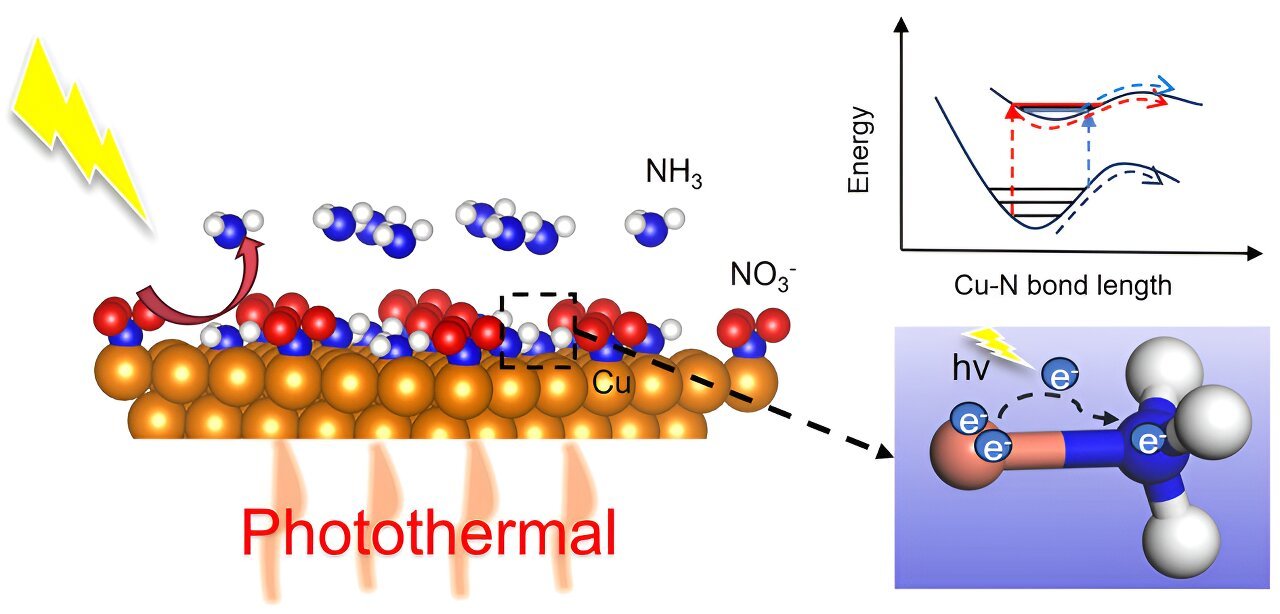
The electrocatalytic nitrate reduction reaction (NO3RR) has attracted the attention of researchers for its significant value in ammonia synthesis and effluent treatment. Plasmon-assisted electrocatalysis provides a powerful strategy for efficient conversion of solar energy to chemical energy by combining solar light with an electrochemical bias on the plasmonic metal nanostructures.
Unfortunately, the electrocatalytic performance of plasmon-assisted NO3RR using gold (Au) catalysts, a typical plasmonic metal, exhibits ultra-low yields for ammonia synthesis due to the worst intrinsic catalytic activity of Au for NO3RR. The metallic Cu displays both excellent catalytic performance for NO3RR and plasmonic resonance adsorption. However, no research has focused on the plasmon-assisted NO3RR on Cu photoelectrodes until now.
A recent study in the Chinese Journal of Catalysis sheds light on this topic.
Professor Yuchao Zhang’s group from the Institute of Chemistry, Chinese Academy of Sciences has found that the plasmonic excitation of Cu nanowires (Cu NWs) dramatically enhances the NO3RR performance. The current density of NO3RR was enhanced by 27.66 mA cm–2 (a 3-fold enhancement) under simulated solar irradiation at 328 K compared with that in the dark at 298 K.
In addition, the current density retained 88% of its initial value under plasmonic excitation after 400 cycles of the cyclic voltammetry (CV) tests, in contrast to the 43% decay in the dark. The faradaic efficiency (FE) reached nearly 100%, with the potential ranging from −0.2 to −0.4 V vs. RHE, and a high NH3 yield rate of 1.37 mmol h−1 cm−2 was achieved at −0.2 V vs. RHE.
The team discovered that the enhanced performance derived from the accelerated rate-limiting desorption of NH3, which contributed to the plasmon induced photoelectric and thermal effects on Cu photoelectrode. The plasmon-assisted strategy was also versatile for other Cu-based nanostructures and revealed the great potential for promoting the NO3RR performance by introducing thermal and light irradiation.
More information:
Zhenlin Chen et al, Synergistic photoelectric and thermal effect for efficient nitrate reduction on plasmonic Cu photocathodes, Chinese Journal of Catalysis (2024). DOI: 10.1016/S1872-2067(24)60060-4
Citation:
Study: Plasmonic copper nanowires boost nitrate reduction efficiency (2024, August 29)
retrieved 29 August 2024
from https://phys.org/news/2024-08-plasmonic-copper-nanowires-boost-nitrate.html
This document is subject to copyright. Apart from any fair dealing for the purpose of private study or research, no
part may be reproduced without the written permission. The content is provided for information purposes only.






